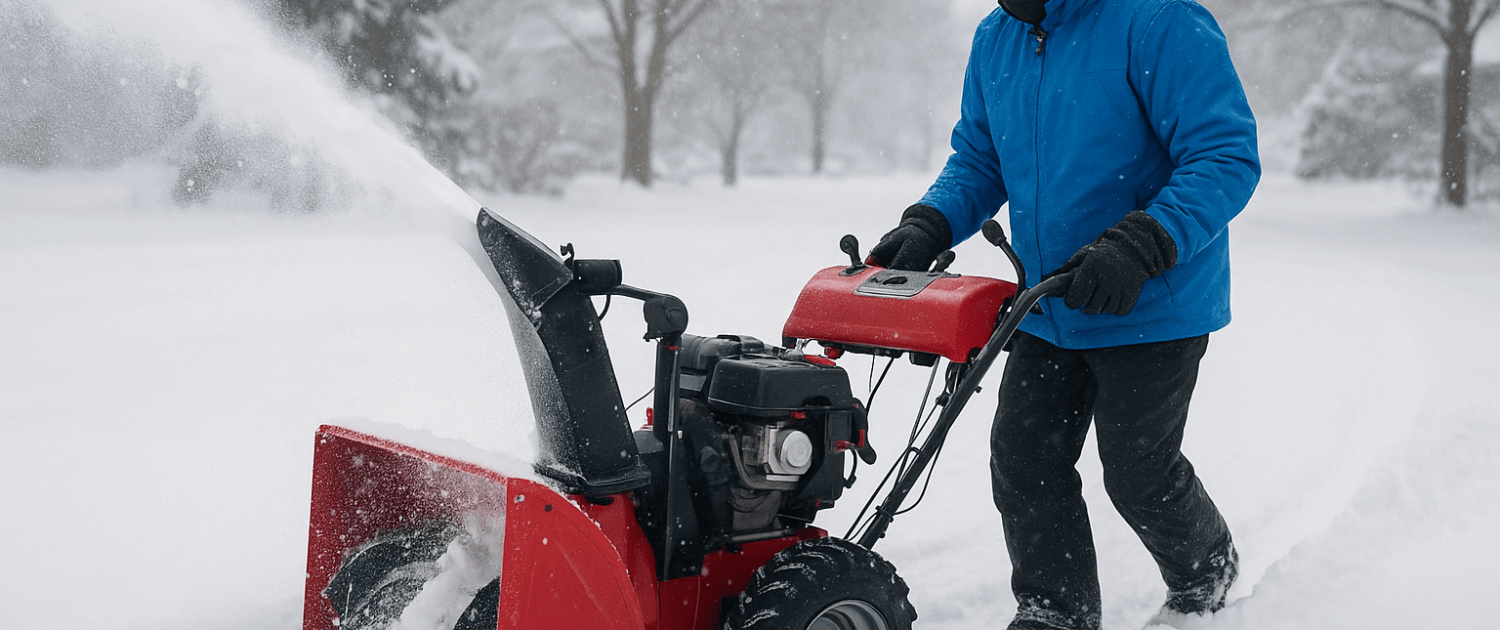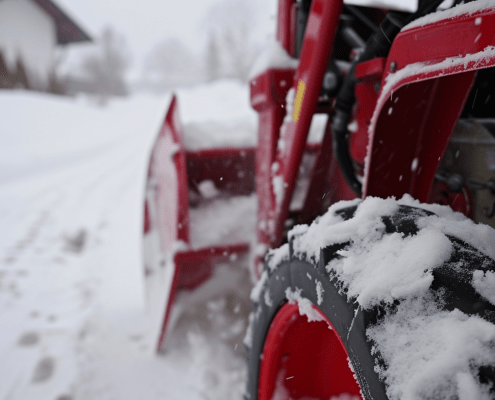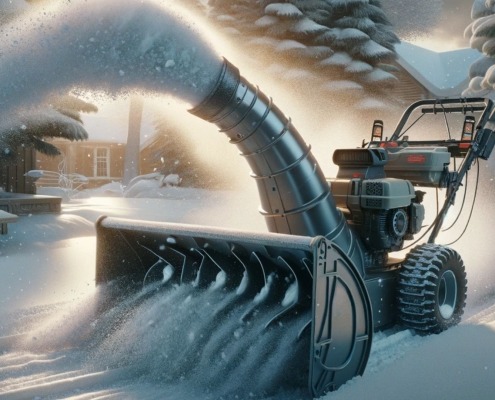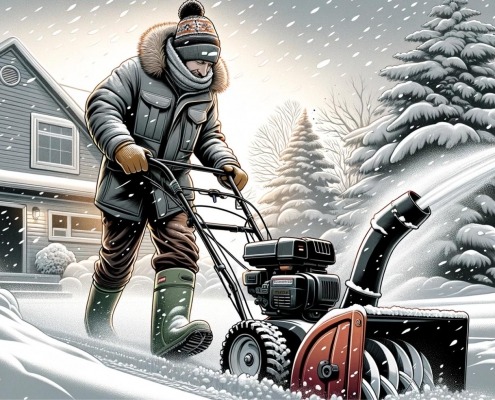How to Troubleshoot and Fix a Snowblower That Keeps Stalling
Steven E / Monday May 19, 2025
Picture the excitement of preparing your snowblower to get rid of those enormous mounds of winter snow, only to be met with disappointment as it sputters and abruptly stops in a matter of seconds. Having your snowblower stalling out is a problem that can be resolved by following a simple set of troubleshooting steps. With the right knowledge and a few replacement parts, you can get your machine running smoothly again.
The information in this article may not apply to your specific appliance model. We recommend consulting your manufacturer’s documentation or contact us with any questions.
Common causes of snowblower stalling
There are a handful of culprits that commonly lead to 2-stage and single-stage snowblowers starting up initially but then dying shortly after. Here are the most likely underlying issues:
Clogged carburetor
One reason a snowblower starts and then stalls is a clogged carburetor. The carburetor mixes air and fuel for proper combustion. Over time, the gas breaks down and leaves behind thick, sticky residues that clog up the carburetor’s tiny passages and jets. This restricts airflow and fuel delivery, causing the engine to die.
Unfortunately, modern gas blends have more ethanol and are more prone to clogging up compared to older formulations. The small engines in snowblowers are especially vulnerable.
Symptoms of a fouled carburetor include:
- The engine starts but stalls after 10-20 seconds
- Loss of power under load or heavy snow
- Black smoke from the exhaust
- Trouble restarting when hot
Fortunately, a thorough carburetor cleaning can often resolve the issue and get your snowblower running smoothly again.
Blocked fuel cap vent
Another sneaky culprit for stalling is a blocked fuel cap vent. As gas in the tank is used up, pressure drops. A tiny vent on the cap allows air to enter and equalize pressure. Over time the vent can get plugged with dirt, ice, or debris.
When the vent gets blocked, a vacuum forms inside the fuel tank. This vacuum or vapor lock stops proper fuel flow to the carburetor, causing the engine to die.
Clues that point to a plugged fuel cap vent:
- The snowblower starts fine with the fuel cap lose
- Stalling happens more on colder days
- The fuel tank feels hard or bulging
Installing a new cap with a clean, functional vent is the solution here. Be sure to use fresh fuel treated with a stabilizer.
Degraded spark plug
Don’t underestimate the importance of a good spark plug! Over time, the constant heating and electrical discharge degrades the plug. Common spark plug issues include:
- Cracked or corroded porcelain
- Excessive electrode wear
- Heavy carbon buildup
These defects cause weak or intermittent sparking, which can lead to stall-outs. Visual inspection combined with spark testing will confirm if a replacement is needed.
Spark plug trouble signs:
- Rougher starting and idling
- Loss of power under heavy snow loads
- Fouled smell from exhaust
Annual spark plug replacement provides cheap engine insurance for a trouble-free winter.
Other stalling possibilities
While a clogged carburetor, blocked vent, and bad spark plug to make up the majority of snowblower stalling issues, here are a few other less common possibilities to be aware of:
- Overfilled engine oil – Excess oil leaks past the piston rings, fouling the spark plug and causing misfires. Check the level and clean out any oil from the cylinders and carburetor passages.
- Contaminated fuel – Ethanol attracts moisture, and old gas can grow mold and algae. Try draining old gas and running with fresh fuel and a stabilizer.
- Faulty fuel pump – Weak pump action fails to deliver sufficient gas to the carburetor. Test pump pressure and volume.
- Sheared flywheel key – The flywheel timing gets thrown off, causing backfires and stall-outs. Replace the key to realign timing.
- Damaged fuel lines – Cracked lines leak air into the system and disrupt fuel flow. Inspect lines and replace any worn sections.
- Intake or exhaust valve issues – Sticking valves affect engine timing and compression. Adjust or replace damaged valves.
- Over-advanced throttle plate – Binding linkage causes the throttle to stick open, choking the engine. Lubricate and ensure full range of motion.
Now let’s dive into more detail on diagnosing and resolving the most prevalent snowblower stalling causes.
Fixing a clogged carburetor
The carburetor is the top trouble spot, with gum, varnish, and residue inside the jets and passages being the root cause of most snowblower stall-outs. Here’s how to get yours cleaned out and working properly again:
Inspect and remove the carburetor
- Shut off the fuel valve and disconnect the spark plug before servicing.
- Carefully detach the fuel lines and throttle linkage from the carburetor.
- Remove carburetor retaining bolts and note the position of any gaskets.
- Clean exterior surfaces with a shop rag. Look for gum or varnish buildup.
Clean passages and jets
- Remove any bowl plugs and float pins. Carefully pull out the floats and needle.
- Spray carburetor cleaner into all ports, jets, and drill passages. Let it soak for 5 minutes.
- Flush thoroughly with clean aerosol spray, wire brush any stubborn buildup.
- Rinse components in fresh solvent and blow dry with compressed air.
Reassemble and reinstall
- Insert floats, needles, gaskets, and pump diaphragms in proper orientation.
- Hand tightens screws and bolts, don’t over-torque plastic components.
- Double-check linkage and fuel line connections.
- Test run, and adjust carburetor tuning as needed for smooth running.
A good cleaning resolves fouling issues about 8 times out of 10. But if the removal of passage blockages doesn’t improve performance, rebuilding or replacing the carburetor is the next step.
Unblocking a plugged fuel cap vent
A blocked fuel cap vent is another sneaky culprit when diagnosing a stalling snowblower. Here’s how to test for a clogged vent and get it flowing freely again:
Confirm the vent is clogged
Start by verifying that a plugged vent is the actual problem:
- Run the engine with the fuel cap slightly loosened. If it now runs normally, the vent is blocked.
- Remove the cap and shake it – you should hear the flapper inside rattling.
- Poke a thin wire into the vent holes to clear any packed dirt or debris.
- Inspect the vent chamber inside the tank neck for ice, gum, or corrosion.
Clean or replace the fuel cap
If tests confirm the vent is obstructed:
- Clean the cap thoroughly with solvent and compressed air.
- Scrape any paint or corrosion buildup around vent openings.
- If the cap is heavily contaminated or damaged, replace it.
- Add fuel stabilizer to keep fresh fuel from gumming up.
- Consider installing an inline fuel filter.
And remember, always use clean, fresh gasoline and proper fuel storage to prevent future issues with clogged vents.
Testing and replacing spark plugs
The constant heat and electrical discharge take a toll on spark plugs over time. Here are tips for testing plugs and replacing worn ones:
Inspect spark plug
- Remove the plug and visually check the condition. Look for:
- Cracked, corroded, or damaged porcelain
- Excessive electrode wear/burning
- Heavy soot or carbon buildup
- Compare to new plug – if worn, replace.
Spark test
- Install plug-in tester and crank engine.
- Should see consistent bright blue spark between tester probes.
- Intermittent or weak sparking → bad plug.
- No spark at all → faulty ignition coil.
Install new plug
- Match new plug to engine specs – material, heat range, thread size.
- Set the gap to 0.030” with the feeler gauge.
- Hand thread carefully, don’t cross thread.
- Tighten firmly with a plug wrench – don’t over-tighten.
Regular spark plug replacement ensures reliable cold starting and prevents mid-job frustrations from unexpected stall-outs.
Where To Find Us
If you need any replacement parts for your appliances, you can enter your model number at AppliancePartsPros.com to locate and order them quickly. Most orders arrive in just two business days, and we have tons of great information in our repair help section and YouTube videos to help you troubleshoot.
Stay connected with the latest DIY tips, tutorial videos, and repair guides by following us on Facebook, Instagram, and Twitter. We love hearing about your repair stories and successes. If you need more help or want personalized guidance, feel free to reach out. We’re ready to help you take on your next project with confidence!
With nearly a decade of experience in providing top-notch customer service regarding appliance parts and repair, Steven enjoys sharing practical advice, troubleshooting tips, and interesting information to help readers stay informed.





